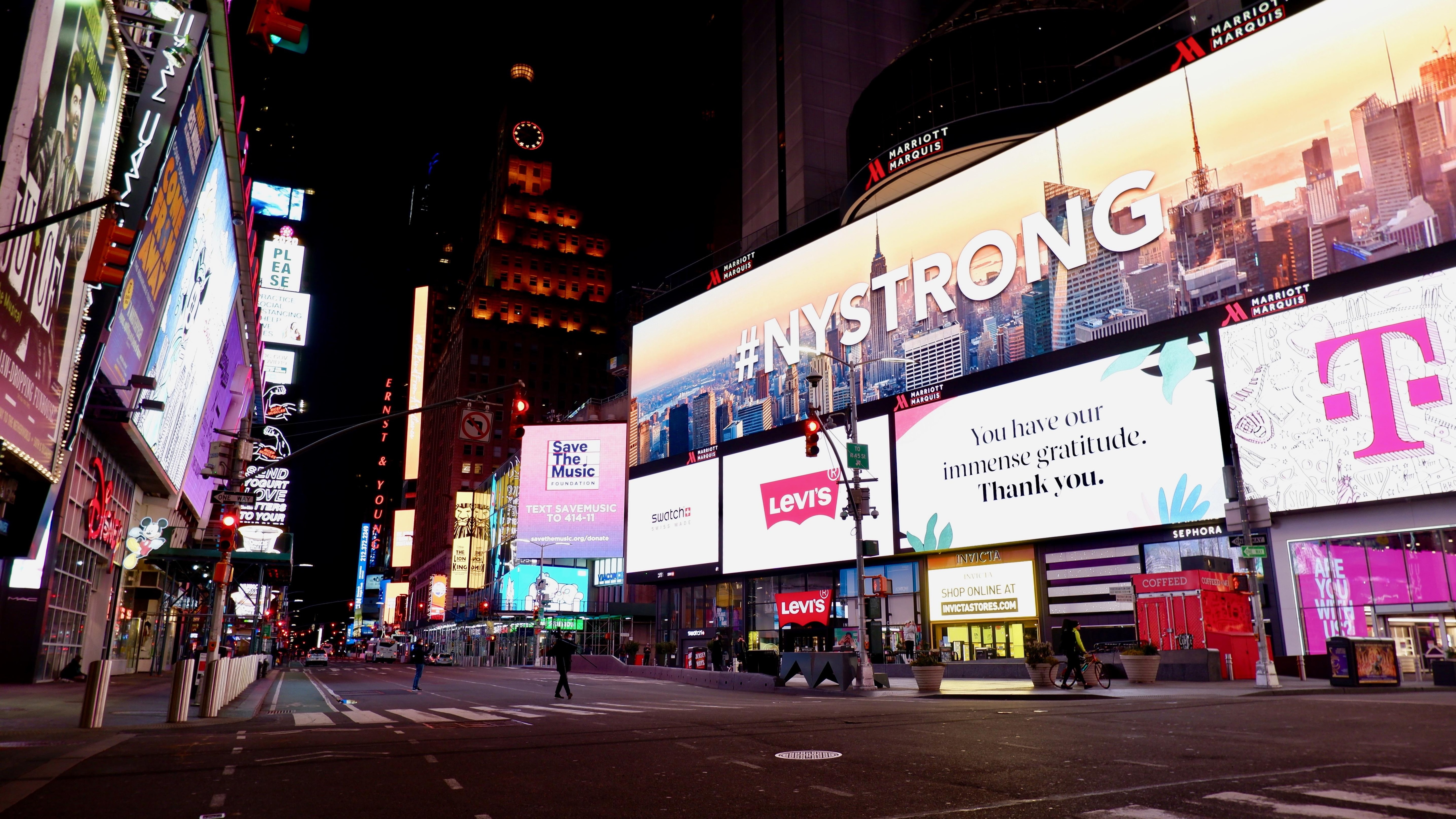5:15 p.m., somewhere under the Hudson River, between New Jersey and New York. In the middle of the Lincoln tunnel, an eye on the odometer. The speed of the car appears to be unusually high for what should be New York rush hour. And yet, no traffic jam. In fact, there are hardly any other cars on the tracks.
This feeling of emptiness is transposed almost immediately into the streets of the island of Manhattan, deserted by many of its legendary yellow taxis.
A man alone in Times Square.Photo: Radio-Canada / Raphaël Bouvier-Auclair
–
At 8 p.m., parking is a breeze in front of one of Broadway’s many theaters. Normally performances should start at this time, but not today.
A few meters away, two policemen are riding their horses alone on Broadway Avenue. Times Square is always lit up, but hardly anyone except a handful of curious people take advantage of it.
“I’ve never seen that,” says Elijah, a New Yorker. “I don’t like it,” adds his girlfriend Khavija.
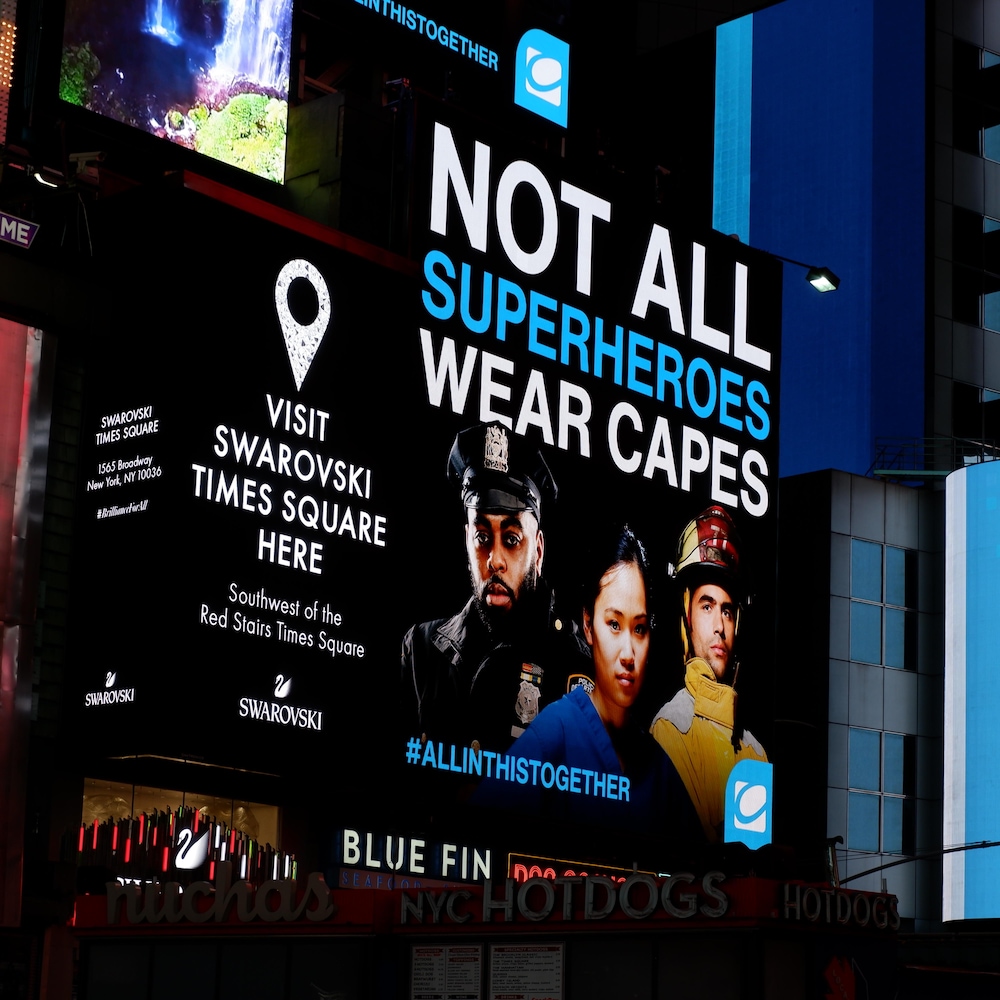
A message of support for healthcare workers, police and firefighters in Times Square.Photo: Radio-Canada / Raphaël Bouvier-Auclair
–
Behind us, many illuminated panels recall the reasons for this unreal void. Messages call for monitoring symptoms of COVID-19. Others highlight the work of the heroes who visit hospitals in the region every day.
In New York, tens of thousands of people have been infected. Every day for a week, hundreds of deaths have been deplored. In an attempt to curb the spread of the virus, authorities have asked non-essential businesses to shut down.
In shops that are still open, posters, disinfectant dispensers and sometimes even plastic signs have been installed to avoid contact with customers. Parks have also been closed and New Yorkers are asked to stay in their homes as much as possible.
Valérie, installed in Midtown for six years, made an exception to her confinement to meet us outside, the time of an interview.
The meteoric rise in confirmations of contamination cases and city-wide deaths worries him.
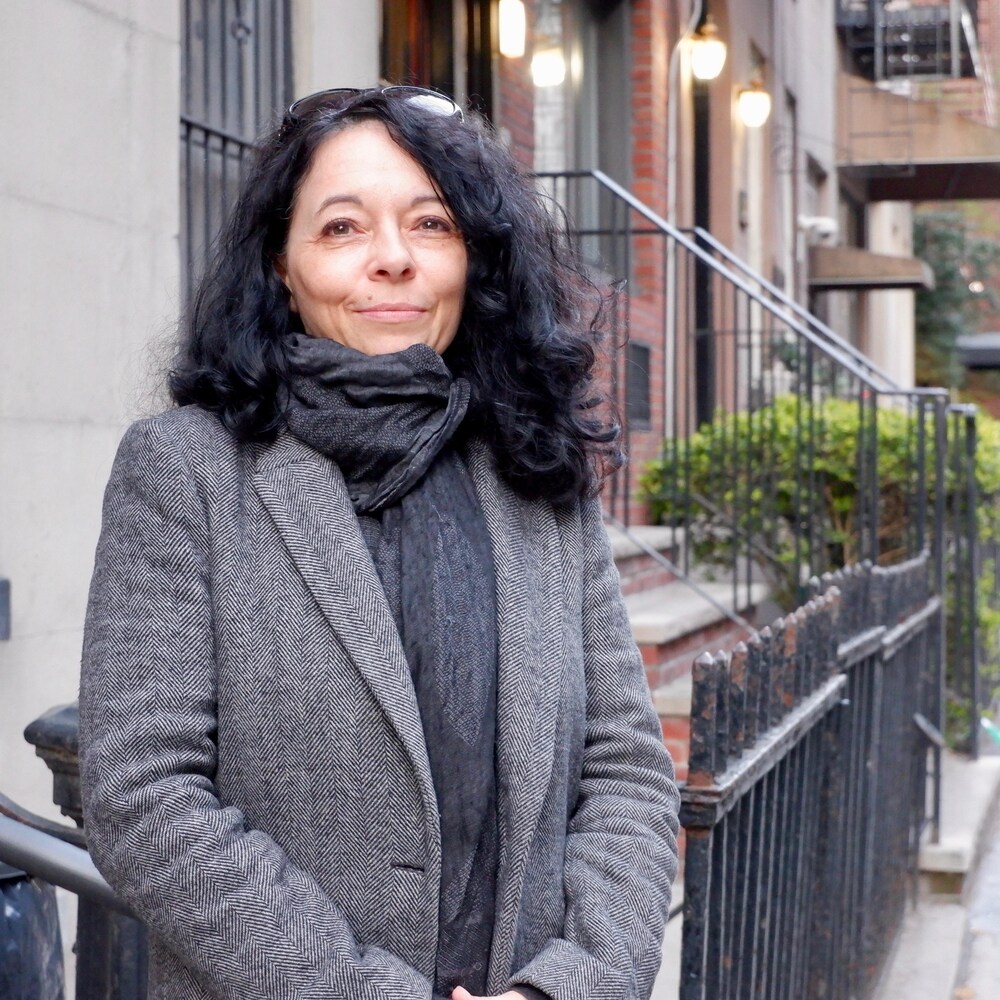
Valerie, a resident of Midtown, in the Manhattan borough of New York.Photo: Radio-Canada / Raphaël Bouvier-Auclair
–
It’s absolutely catastrophic and it’s scary. We tell ourselves we must above all not get sick, because otherwise we have a good chance of not being treated.
In anguish, there is also solidarity. As soon as the interview is over, sounds emerge from everywhere. Every evening, residents of 52nd Street, like those in many neighborhoods across the city go to their balconies and cheer. A sincere thank you to the doctors, nurses, paramedics and other health professionals, who are exposed to the virus every day.

A message to health professionals in front of a New York hospital.Photo: Radio-Canada / Raphaël Bouvier-Auclair
–
An overwhelmed health system
In the streets of New York, the concert of horns, a must-see soundscape in the city, has given way to the disturbing sound of ambulance sirens.
Never have the emergency services been so inundated with calls as in recent days, according to the city’s fire department. Not even on September 11, 2001.
The epidemic overflows hospitals, such as Mount Sinai, north of Manhattan Island. So much so that on the other side of 5th Avenue, in the middle of Central Park, white tents have been erected as a field hospital to accommodate dozens of patients.
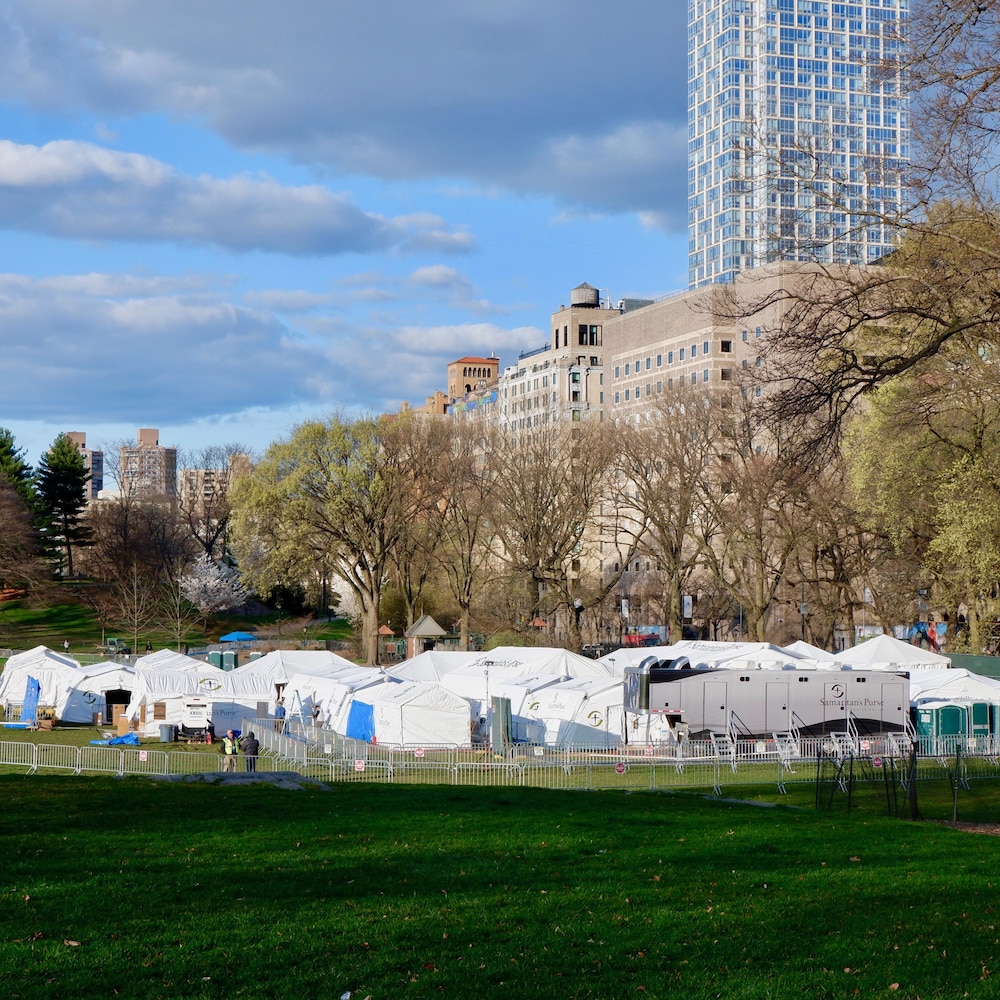
A field hospital in Central Park. Photo: Radio-Canada / Raphaël Bouvier-Auclair
–
25 kilometers to the south, similar landscape. Tents have also been set up behind the SUNY Medical Center, where overflows are expected.
In this Brooklyn facility, emergencies are already at 175% of their capacity, admits Dr. Julien Cavanagh.
Behind the yellow mask, a tool that has become essential to protect yourself from the coronavirus, you can feel the fatigue of a health professional who no longer counts his working hours.
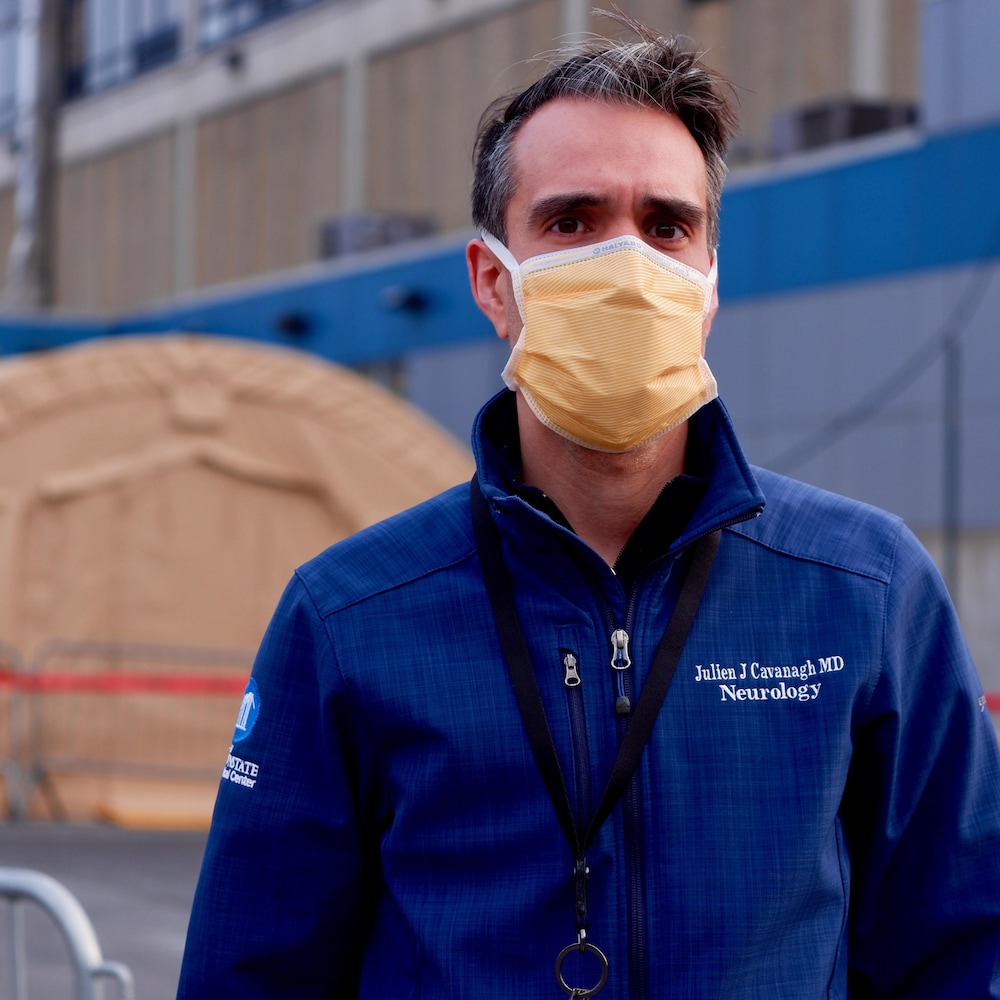
Doctor Julien Cavanagh was marked by his first visit to a Covid-19 unit.Photo: Radio-Canada / Raphaël Bouvier-Auclair
–
This Franco-American doctor will be forever marked by his first visit to the treatment unit for patients with COVID-19.
One has the impression of returning to Chernobyl. You get in there, there are all these patients who are in difficulty breathing. And you don’t see this virus, but you know it’s there
To fight this invisible enemy, respirators and masks are the sinews of war. In the Brooklyn hospital, this material, which was of great concern in recent weeks, has started to be delivered. But if the federal reserves run out “it could have serious consequences,” admits Julien Cavanagh.
“It raises ethical questions. If a patient goes into cardiac arrest and there is no protective equipment for the person doing the cardiac massage, what do we do? He asks himself.

Refrigerated trucks, to serve as morgues, have been installed near several New York hospitals.Photo: Radio-Canada / Raphaël Bouvier-Auclair
–
So far, New York doctors have not had to make the heartbreaking choices that Italian doctors have faced. But these decisions could become inevitable.
Especially since in the huge metropolitan area of 20 million inhabitants, the virus continues to spread. For Julien Cavanagh, like other health experts, still too many New Yorkers do not take distancing measures seriously enough, especially on beautiful sunny days.
Then there are those who cannot isolate themselves in order to ensure their financial survival. Unlike the rather deserted streets of central neighborhoods, the metro is still frequented by many essential workers, who travel in sometimes crowded wagons.
“How do I pay for my mortgage and my daughter’s education?” Says a maintenance worker met near Elmhurst Hospital in Queens, not far from symptomatic patients, who are waiting outside the facility to be tested.
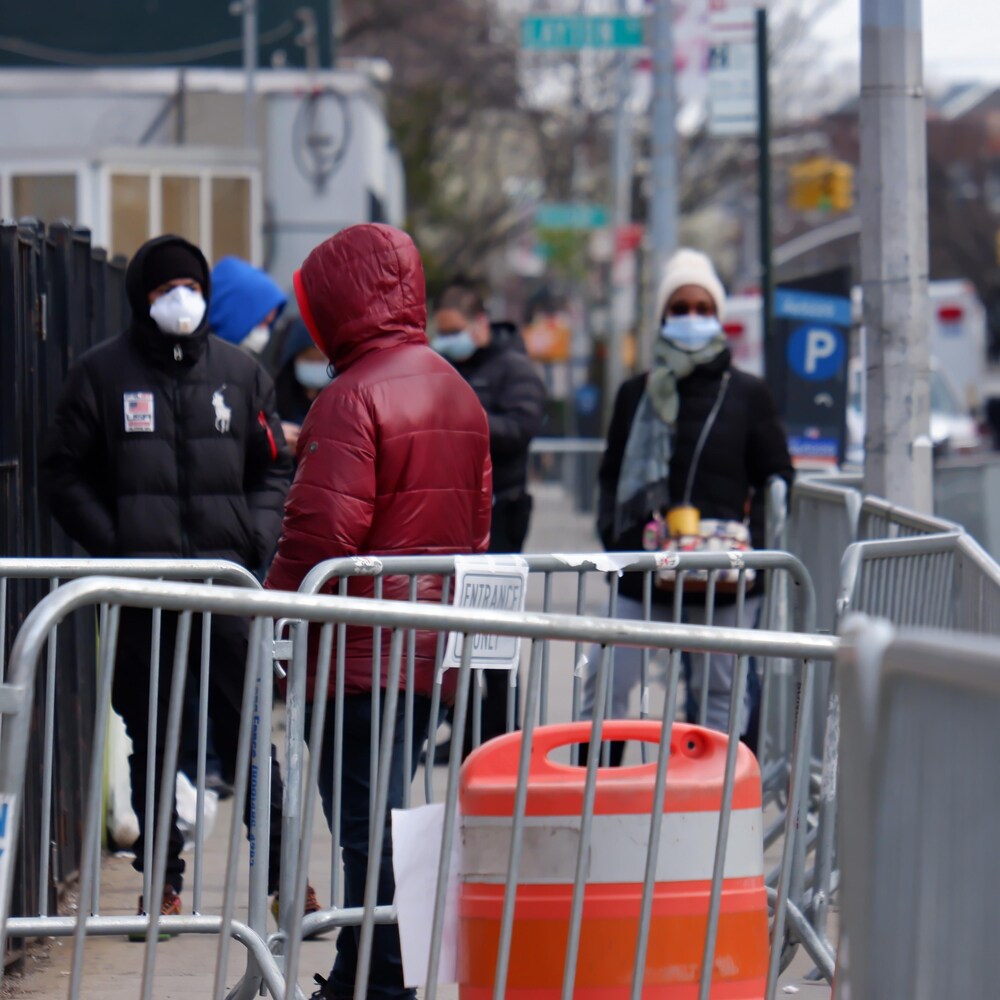
Patients waiting to be tested for Covid-19 outside a Queens hospital. Photo: Radio-Canada / Raphaël Bouvier-Auclair
–
This borough, more disadvantaged than Manhattan, is by far the sector of the city most affected by the crisis.
According to recent public health data, there are 820 confirmed cases of contamination per 100,000 residents in Queens, compared to just 469 in Manhattan.

New Yorkers must now cover their faces in public.Photo: Radio-Canada / Raphaël Bouvier-Auclair
–
An exit from the crisis difficult to predict
While the virus has spread unevenly between inner city and better-off neighborhoods, New Yorkers across town face the same uncertainty.
“We have more or less the mentality in New York that we can conquer everything,” says De Guise Vaillancourt, who admits that at the moment, this is not the case. For this resident of the southern tip of Manhattan, not far from the financial heart of the city, the current crisis is unprecedented.
And yet, this man, who has been living in New York for thirty years, saw the twin towers of the World Trade Center collapse in the September 2001 attack.
“After the morning (of September 11), it was over, it was reconstruction. Now, we can’t even talk about reconstruction. Where is the end point of all this? He says, echoing a question asked by thousands of New Yorkers.
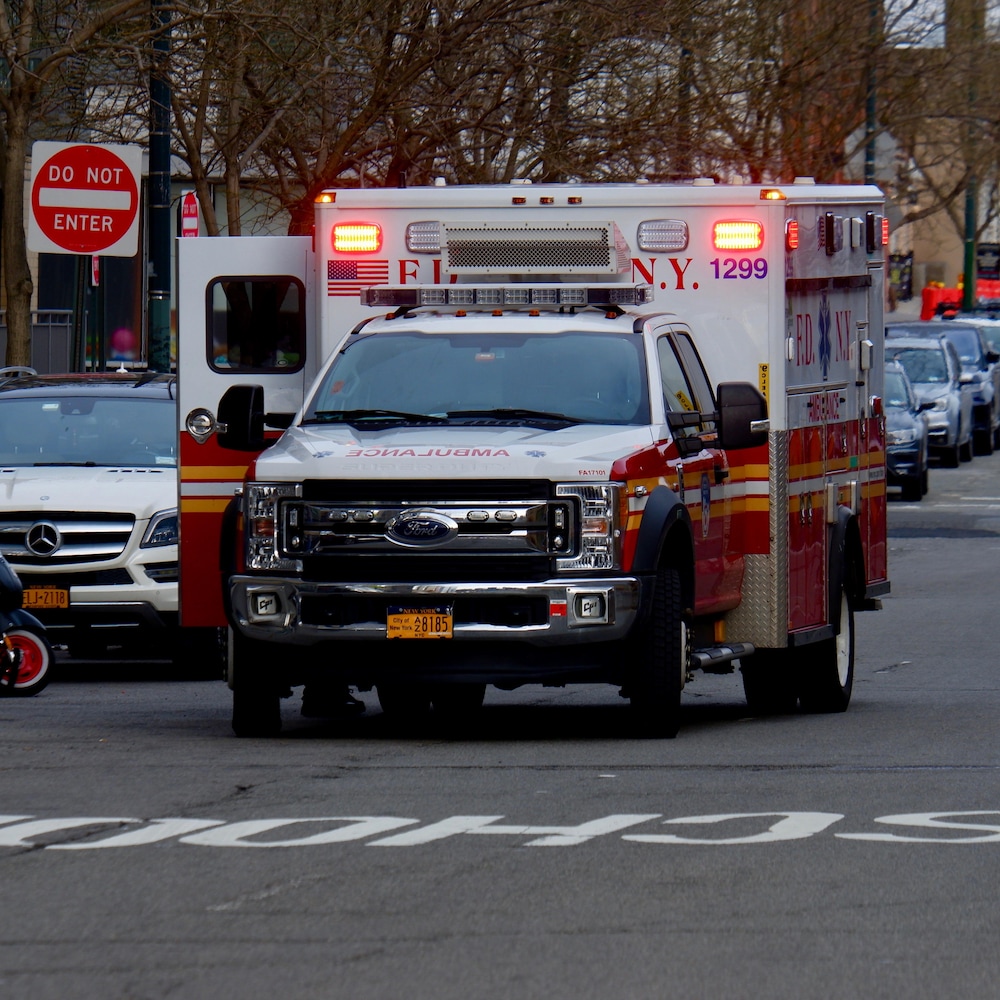
These days ambulances are very present in New York.Photo: Radio-Canada / Raphaël Bouvier-Auclair
–
“I would like to get my professional life back from two months ago. Because there it is completely reorganized and upsetting. We don’t know for how long. That is exhausting, ”says Dr. Julien Cavanagh for his part.
In his Brooklyn hospital, as in dozens of other establishments across the city, we know that the peak of the crisis is not yet here. New York State Governor Andrew Cuomo on Saturday cited a peak in contamination in four to eight days.
To face this week which promises to be crucial, the hospital staff, already overwhelmed, can at least count on reinforcement. More than 20,000 health care workers from other states have agreed to come and help their New York colleagues.
Then, in the unusual void of the city, it’s always possible to roll your eyes for a little solace.
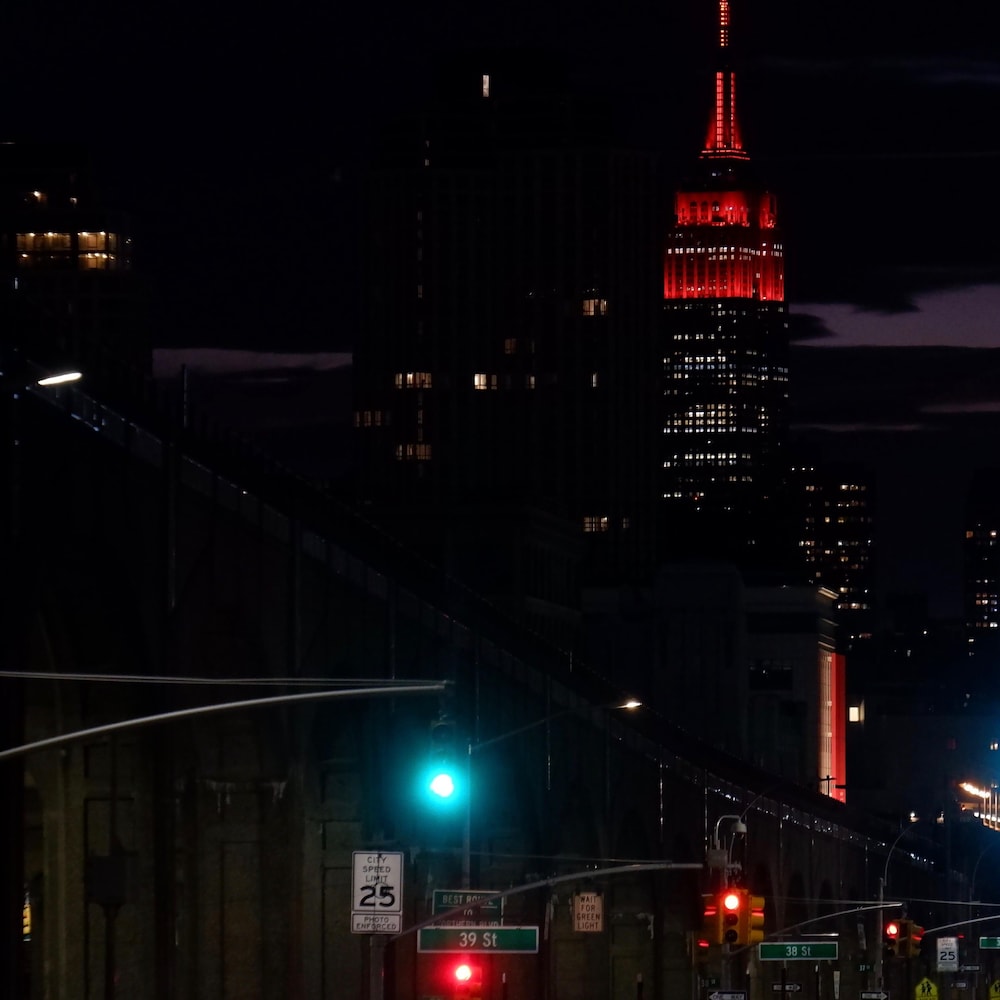
The Empire State Building lit up in red to honor New York’s healthcare workers. Photo: Radio-Canada / Raphaël Bouvier-Auclair
–
Each evening, the top of the iconic Empire State Building is illuminated in red to pay tribute to healthcare workers. Occasionally, the intensity of the light increases briefly, as in a beat.
Like what even in the face of death, emptiness and anxiety, the heart of New York still beats.
–
